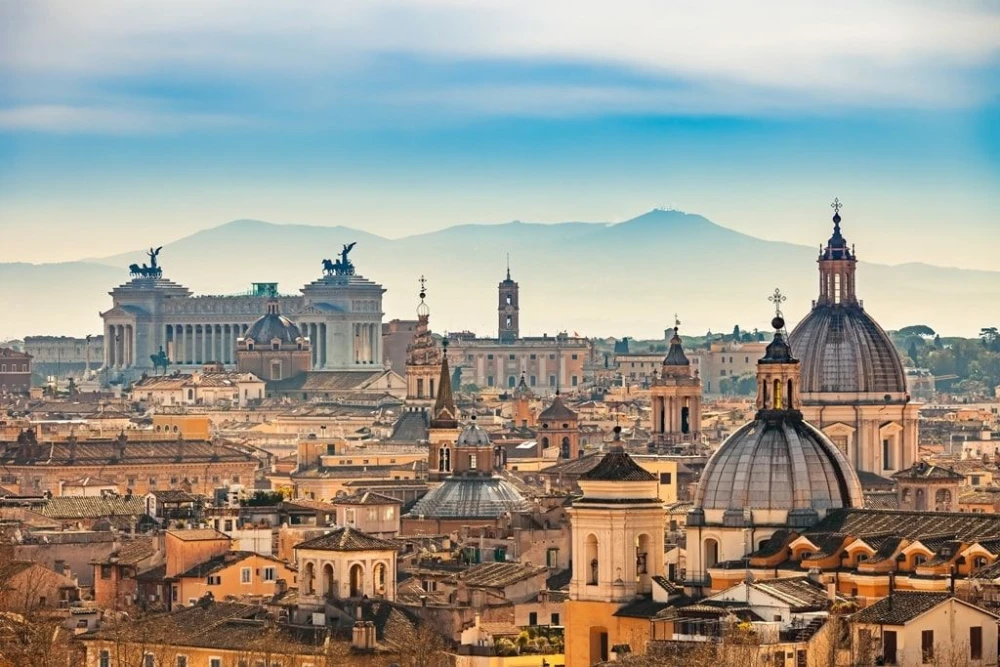15124, Maroysi, Athens, Greece
Barcelona, Cartagena-, Tangier, Funchal (Madeira), Malaga, Ajaccio, Civitavecchia (Rome)


Barcelona is one of the world's greatest treasures, a global capital of commerce, fashion, culture and sunshine. Cruise visitors should start with a walk down Las Ramblas, the glorious tree-shaded thoroughfare at the heart of the city, enjoy a dive in the wonderful beaches nearby, but, most of all, see what visionary architect Antoni Gaudi wrought. Seven of his creations have been honored as UNESCO World Heritage Sites, including La Sagrada Familia, the Park Guell and Casa Mila. Time provided, you can also visit the former Olympic Ring on the hill of Montjuic, home to world-class parks, fountains and museums. Barcelona, which nurtured such artistic giants as Picasso, Dali, Miro and Casals, is definitely a traveler's paradise.
Cartagena is major naval station located in south-eastern Spain, in the autonomus Region of Murcia. Since its foundation in 229 B.C, it has been inhabited by several cultures which have left their mark on its artistic heritage as one of the most important defensive ports in the country. The highlights of the city include the Muralla del Mar ('Sea Wall'), built by Charles III (18th century), the Old Cathedral located on the Camino del Parque Torres (behind the Muralla del Mar wall), the recently restored Roman Theatre (among its numerous other Roman remains, built between the 5th and 1st centuries BC), the National Museum of Underwater Archaeology ARQUA (at Paseo Alfonso XII, 22), the Town Hall, a gem of modernist architecture dating from the early 20th century and a number of modernist buildings made for its military fortifications. The best way to learn more about the Modernist architecture of Cartagena is to take a walk along the Calle Mayor, which leads off the Plaza del Ayuntamiento square. Here visitors will find the houses of Cervantes and Llagostera, by the Cartagena architect Victor Beltrí. Time given, don't miss Concepción Castle, built on one of the five hills of the old Carthagena and today home of the Centre for the Interpretation of Cartagena's History.
Tangier is part of the Kingdom of Morocco, Africa's whitewashed gateway to Europe and the Mediterranean, a rich blend of cultures, exotic souks, colourful riads, the Kasbah, lively markets.. Wide palm-lined boulevards and humming souks are Tangier's distinctively Moroccan characteristics, but Spanish, French and Berber influences are found everywhere: watch the arched wooden doors, the hefty silver ornamentations, the tighly-woven carpets that tell tribal legends.You can take a tour at the caves of Hercules and the colourful souks of the Old Medina, the Kasbah and the majestic mountains of the Rif.
Madeira is located in the north Atlantic Ocean, 520 km from the African coast and 1.000 km from the European continent. Today, it is a popular year-round resort, noted for its wine, flowers, landscapes and embroidery artisans. Madeira's capital Funchal, on the island's south coast, rises straight up from the sea and enchants visitors, with its red roofs and hibiscus easing gently down the lower slopes of Pico do Arieiro to the ocean. Time given, take the cable car toMonte Palace, in a 15-minute ride up and over the old town of Funchal and the Ribeira de Joao Gomes valley. When in town, wander along the Old centre, with its port and promenade, quaint and narrow winding streets, shops, cafés, bars and restaurants and view "Worker's Market", the 15th-century cathedral, the Theatre, the Town Hall and the waterfront.
Madeira is located in the north Atlantic Ocean, 520 km from the African coast and 1.000 km from the European continent. Today, it is a popular year-round resort, noted for its wine, flowers, landscapes and embroidery artisans. Madeira's capital Funchal, on the island's south coast, rises straight up from the sea and enchants visitors, with its red roofs and hibiscus easing gently down the lower slopes of Pico do Arieiro to the ocean. Time given, take the cable car toMonte Palace, in a 15-minute ride up and over the old town of Funchal and the Ribeira de Joao Gomes valley. When in town, wander along the Old centre, with its port and promenade, quaint and narrow winding streets, shops, cafés, bars and restaurants and view "Worker's Market", the 15th-century cathedral, the Theatre, the Town Hall and the waterfront.
The southernmost large city in Europe, lies on the Costa del Sol (Coast of the Sun) of the Mediterranean, about 100 km east of the Strait of Gibraltar and about 130 km north of Africa. Málaga's history spans about 2.800 years, making it one of the oldest cities in the world. The walls of the Phoenician city are visible in the cellar of the Museo Picasso Málaga. The best-preserved Moorish citadel in Spain is located next to the Roman theater, which which dates from the 1st century BC and was rediscovered in 1951. The nearby caverns of Nerja provided refuge to humans 30,000 years ago and is a must-visit tourist attraction. Cruise guests can visit the old castles, the museums and the beaches or enjoy the scenery, sipping a Malaga sweet wine, accompanied with a plate of tapas.
The capital of Corsica, Ajaccio is the island's largest town and hometown of Napoleon Bonaparte. Everywhere you'll discover traces of the island's long and colorful history, from medieval walled towns to seaside villages guarded by 16th-century towers. One can stroll past the cathedralwhere the future emperor was baptized and the Casa Buonaparte, a museum devoted to the imperial glory. Corsica's nature is characterised by dramatic shoreline cliffs, small coves and golden beaches but it is also the "scented isle", with its stony mountains carpeted in macchia, a low, thick, chaparral comprised of aromatic Corsican mint, rock roses and myrtle.

Our gateway to the Eternal City, Civitavecchia has served as Rome's seaport since the 13th century, boasting a long and venerable history. Its location near the modern city, made it a perfect vacation resort for emperor Trajan, who built a pleasure villa. while Bernini and Michelangelo designed the harbor fortifications. Yet the Eternal City, the ancient capital of the Western World and the center of Christianity for nearly 2.000 years, is our main reason to be here. YYou can visit the ruins of the Forum and the Colosseum, throw a coin in Fontana di Trevi to make sure you return to Rome one day, take a photo in front of the Vatican, view the splendors of the Sistine Chapel or climb the Spanish Steps, once the heart of Rome's Bohemian Quarter and enjoy a delicious gelato, in the glamorous area.
Itinerary







